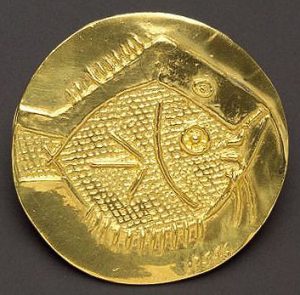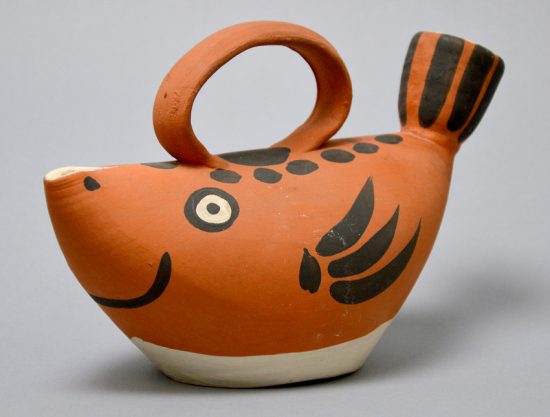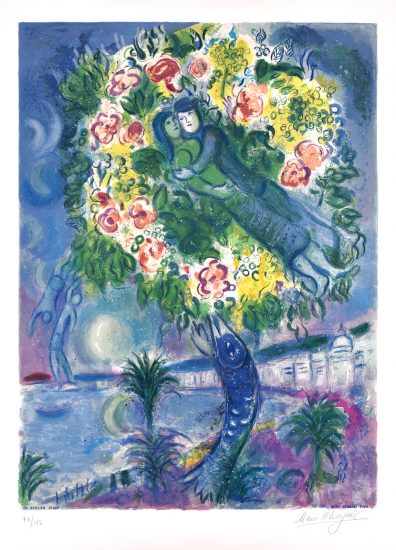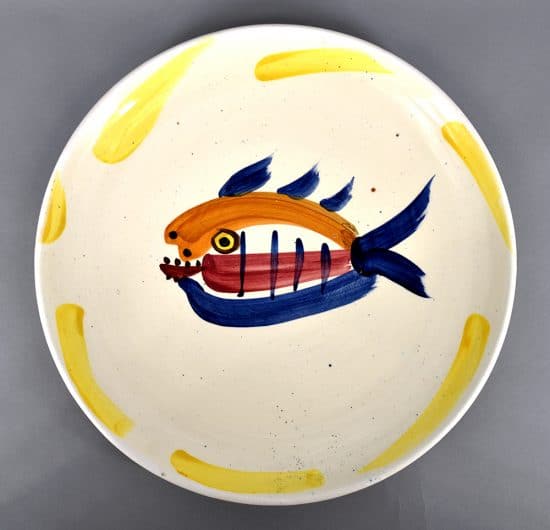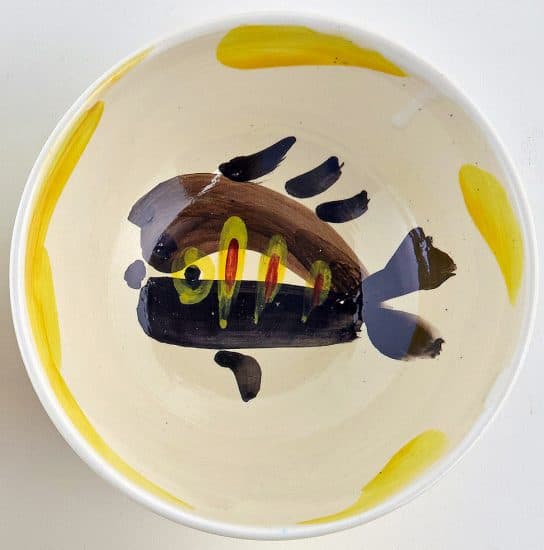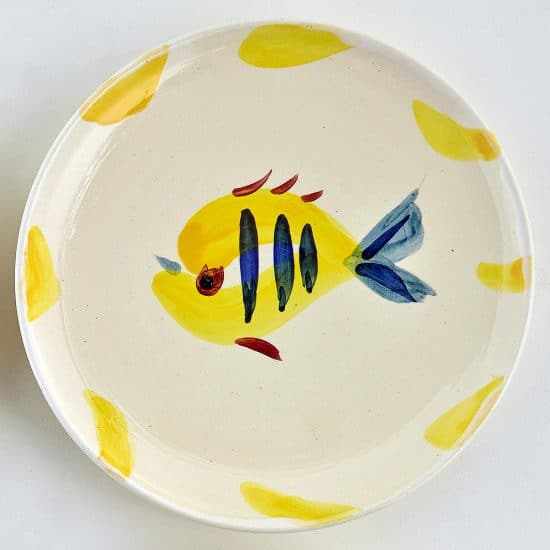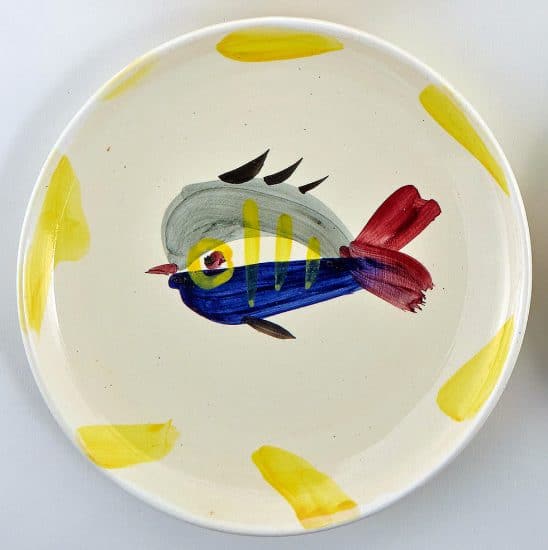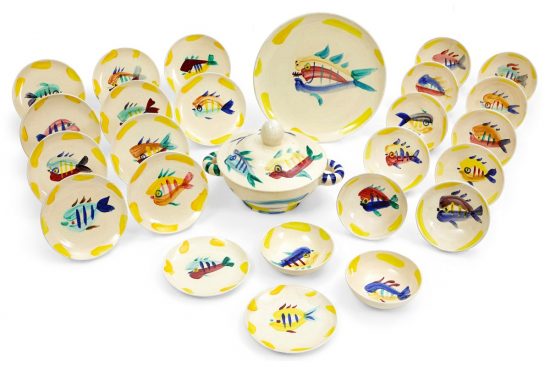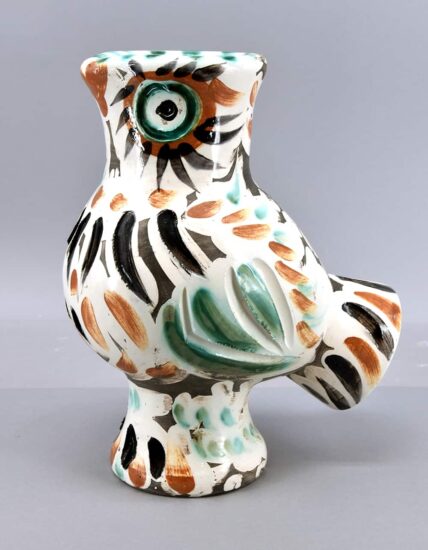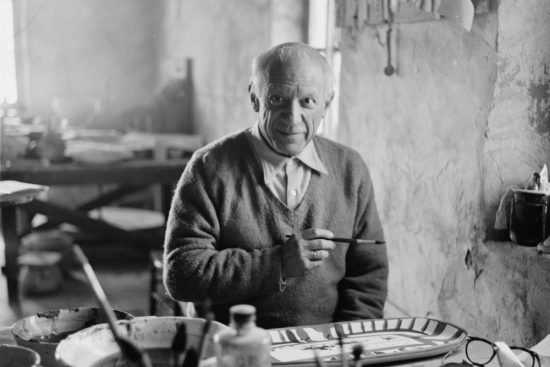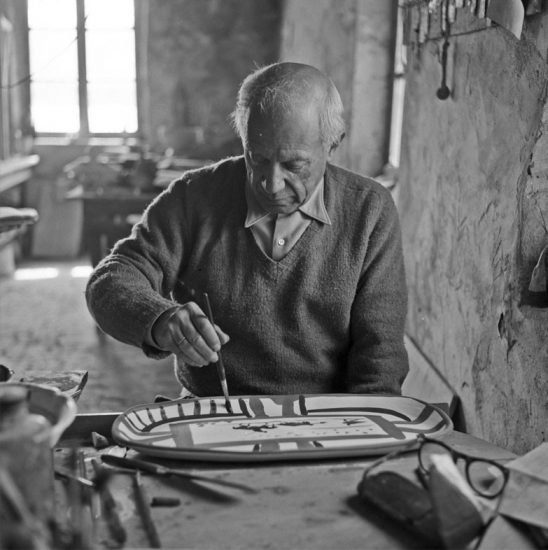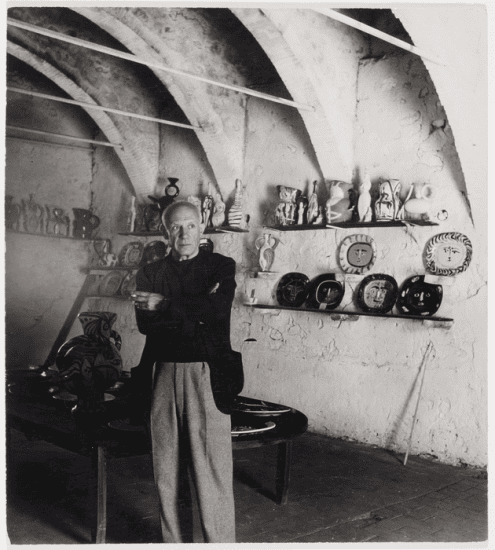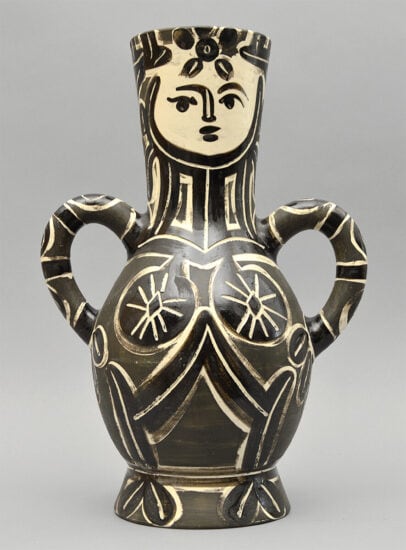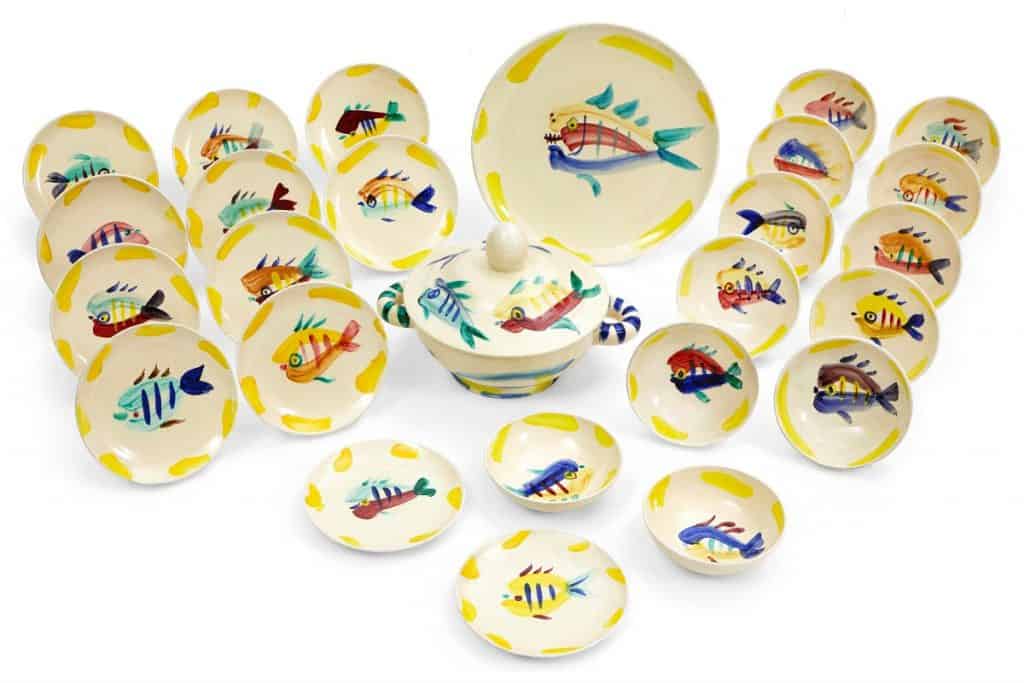
In the latter part of Pablo Picasso’s artistic career, the artist dove into the world of ceramics. After an inspirational visit to the Madoura Pottery studio in Vallauris in the South of France, Picasso learned everything he could about pottery and ceramics. Many of his designs were influenced by the natural world and ancient Greek red and black figure pottery. Animals became a large source of design inspiration for Picasso, specifically birds and fish.
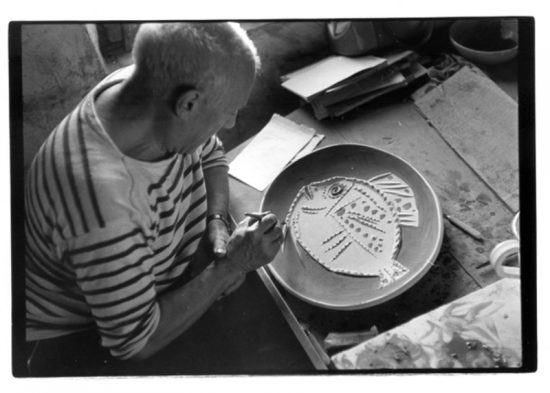
Picasso not only experimented with ceramic glazes and decorative techniques but he also was a pioneer in using the shape of the ceramic to further convey his design. An incredible example of this is Fish Subject (Sujet poisson), 1954, where Picasso shapes the ceramic to form the likeness of a fish, creating a whimsical impression of the animal. The Madoura turned pitcher of red earthenware clay with decoration in black and white engobes maintains the practical element of pottery that Picasso admired while showing us something entirely different and new. The fluted shape of this pitcher echoes that of a real fish, as the spout narrows to form the nose and the opening fans outward to form the tail. The handle serves as a dorsal while the wide-eyed fish himself smiles out at us in an expressive gesture. This pitcher further proves that Picasso is a master of imbuing charm and playfulness in every medium.
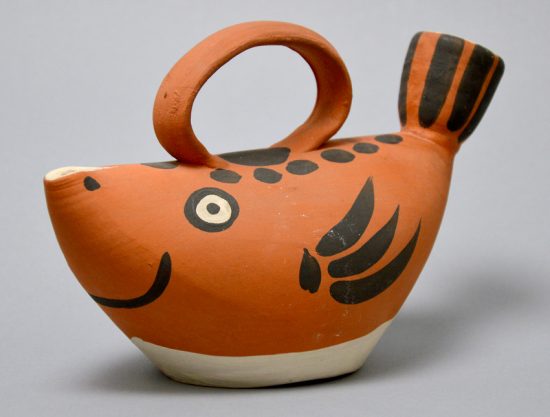
Another example of Picasso’s ceramic works inspired by fish is Fish in Profil, 1955. The simple bowl is elevated by the line drawing design of a fish in profile on the inside. This ceramic is a Madoura round cupel of white earthenware clay, with an engraving of a fish accentuated with oxidized paraffin in glaze bath and black enamel underside. The design of the fish with its spikes and spotted skin reminds us of an ancient or prehistoric specimen. Picasso chose a very natural color palette to compliment the austere composition of the aquatic animal. This work especially highlights Picasso’s interest in the practicality of ceramic pottery in daily life. The artist wanted his art to be more accessible to the public and less exclusive. He knew that bowls, vases, and pitchers appealed to the masses with their useful functionality, unlike paintings and drawings and other types of fine art. Fish are also a staple of many culture’s cuisines all around the world, transcending class boundaries. The two go hand and hand.
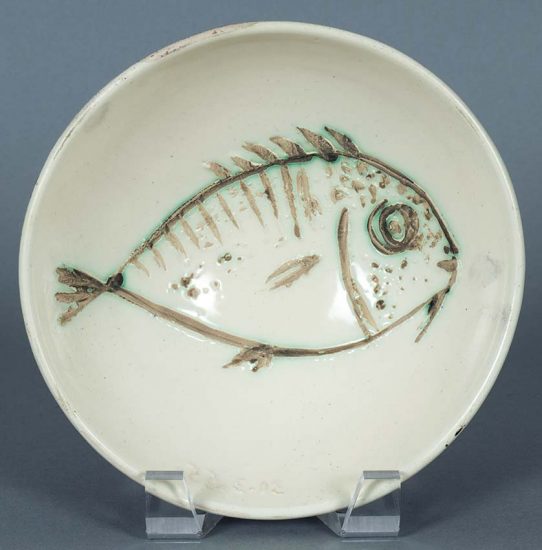
A different approach to the same imagery can be found in “Fish” Service, Plate Q, 1947. This Madoura round plate of white earthenware clay with decoration in engobes and oxides (yellow, light blue, blue, red) under glaze shows us a bright tropical fish formed from abstracted brushstrokes. Here Picasso is experimenting with the use of color in ceramics as opposed to line. A yellow fish with blue stripes, red fins and a two-tone blue tail sits placidly in the middle of the plate. The rim of the plate is decorated in swathes of yellow, circling the fish with fanfare. The placement of the fish seems to mimic and tease at what could possibly be placed on the plate for a meal. This type of humorous commentary is a truly Picasso-esque element that is present in many of his ceramic works. It can be seen over and over how the artist really let his creativity fly with his foray into the medium of ceramics.
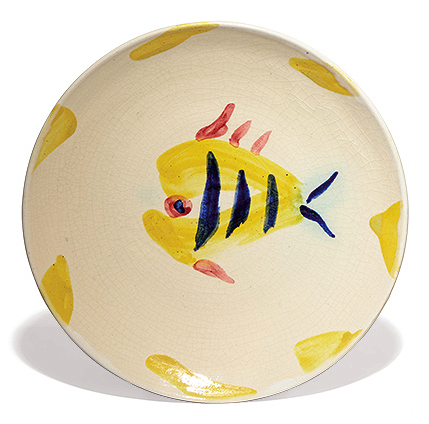
Enjoy our fine art collection of Pablo Picasso Fish.

